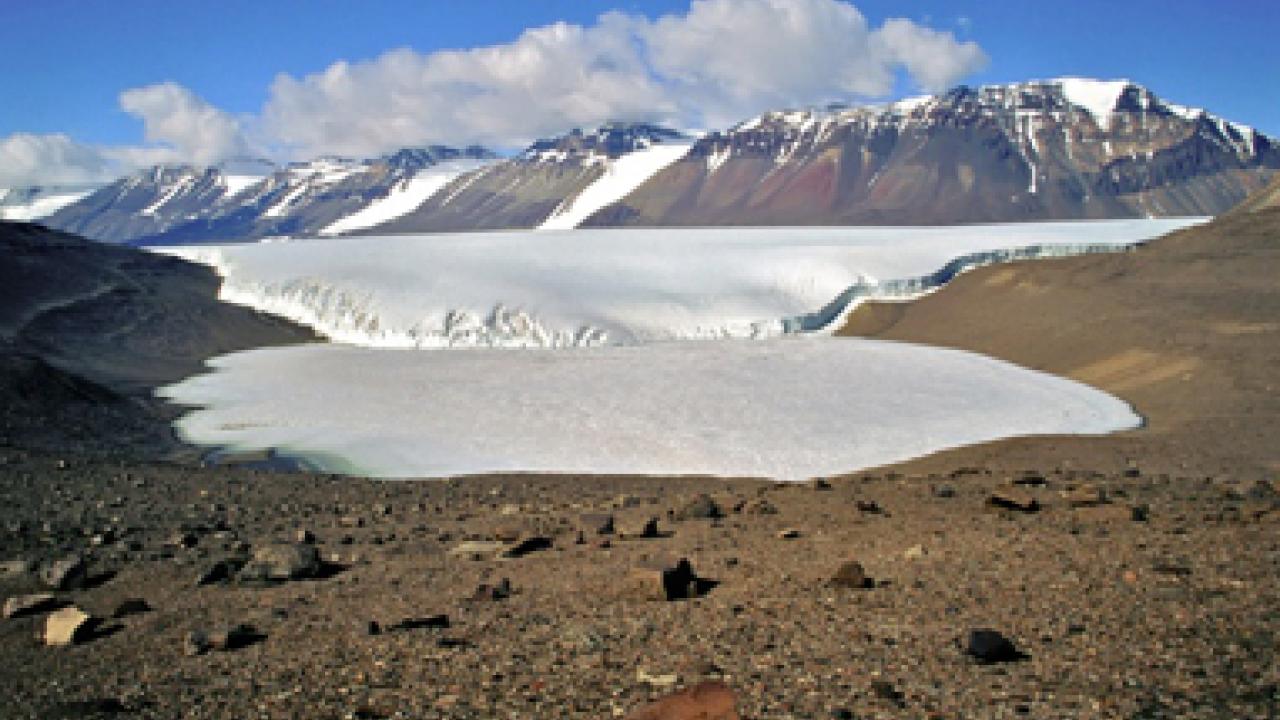Geology professor Dawn Sumner and postdoctoral scholar Bekah Shepard arrived in Antarctica the night of Oct. 6 to begin a seven-week research expedition at frozen Lake Joyce.
“It probably won’t be terribly cold — about 4 degrees below zero (Fahrenheit) at night, and above freezing during the day. But the winds can be very strong,” Sumner said prior to leaving Davis.
The dry valley lakes are special because they contain bacterial communities similar to those on Earth billions of years ago, Sumner said. Lake Joyce is unique because the microbial community is fossilizing now as minerals and microbes combine to form structures. It is not clear if this is a biological process caused by the microbes, or a result of lake chemistry, she said.
Rocks from the lake look like ancient rocks, Sumner said. The researchers hope to get a better understanding of the processes that shape these rocks.
Sumner is especially interested in finding the beginning date of photosynthesis, the process in which sunlight makes food and oxygen. Oxygen appeared in the atmosphere about 2.4 billion years ago, but there is controversy over the evolutionary timing of the first photosynthetic organisms, called cyanobacteria.
Rocks that look like those in Lake Joyce, and which could be fossils of cyanobacterial communities, date back 2.5 billion to 3 billion years.
“The more we understand how these communities look, the better chance we have of understanding the early evolution of life on Earth,” Sumner said.
The expedition also includes scientists from McGill University and the University of British Columbia, the National Aeronautics and Space Administration’s Ames Research Center, the Carl Sagan Center for the Study of Life in the Universe and Aquatic Research Solutions Ltd.
NASA and the National Science Foundation are supporting the project.
BLOGGING FROM ANTARCTICA: Geology professor Dawn Sumner is blogging about her research trip, as long as she has an Internet connection: dawninantarctica.blogspot.com.
Here is an excerpt from her Oct. 5 posting from New Zealand, en route to Antarctica:
“Then, at 1 pm, we went to the Clothing Distribution Center to get our cold weather gear. ... This is what they gave me: An orange down coat, an orange parka, black bibbed insulated pants, a hat, a balaclava, a neck gator, two pairs of insulated leather gloves, a pair of wool mittens, a pair of leather over mittens, a fleece jacket, fleece pants, long underwear tops and bottoms of two different weights, two pairs of wool socks, and “bunny boots.”
Media Resources
Dave Jones, Dateline, 530-752-6556, dljones@ucdavis.edu
